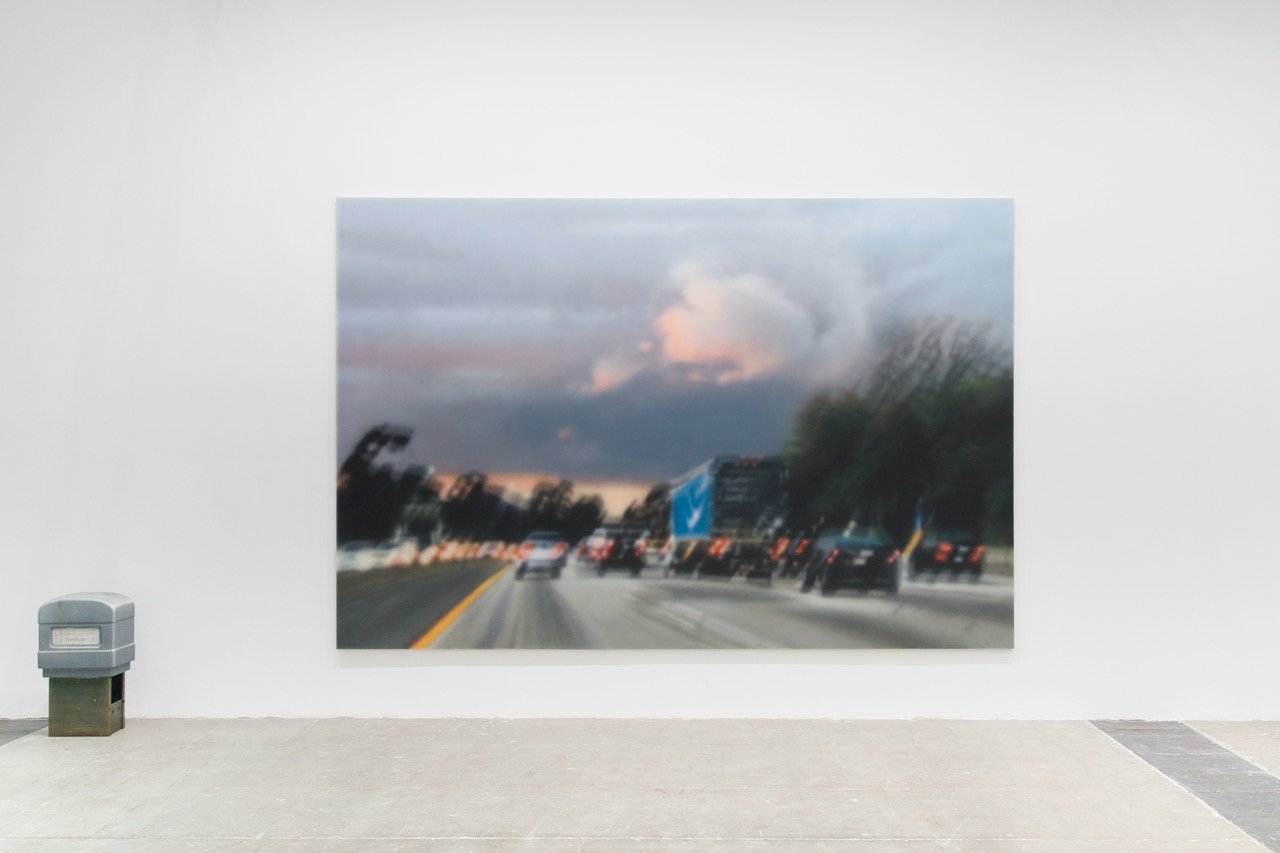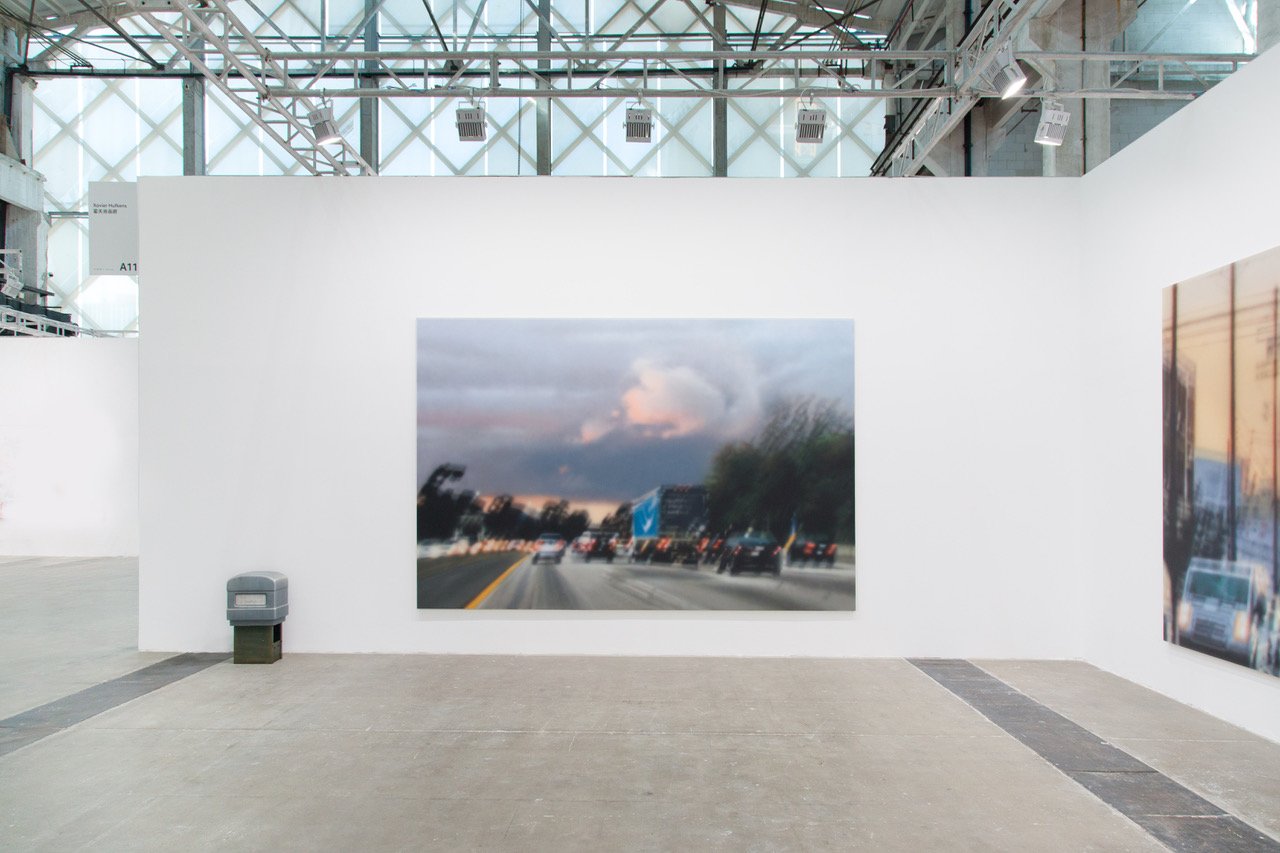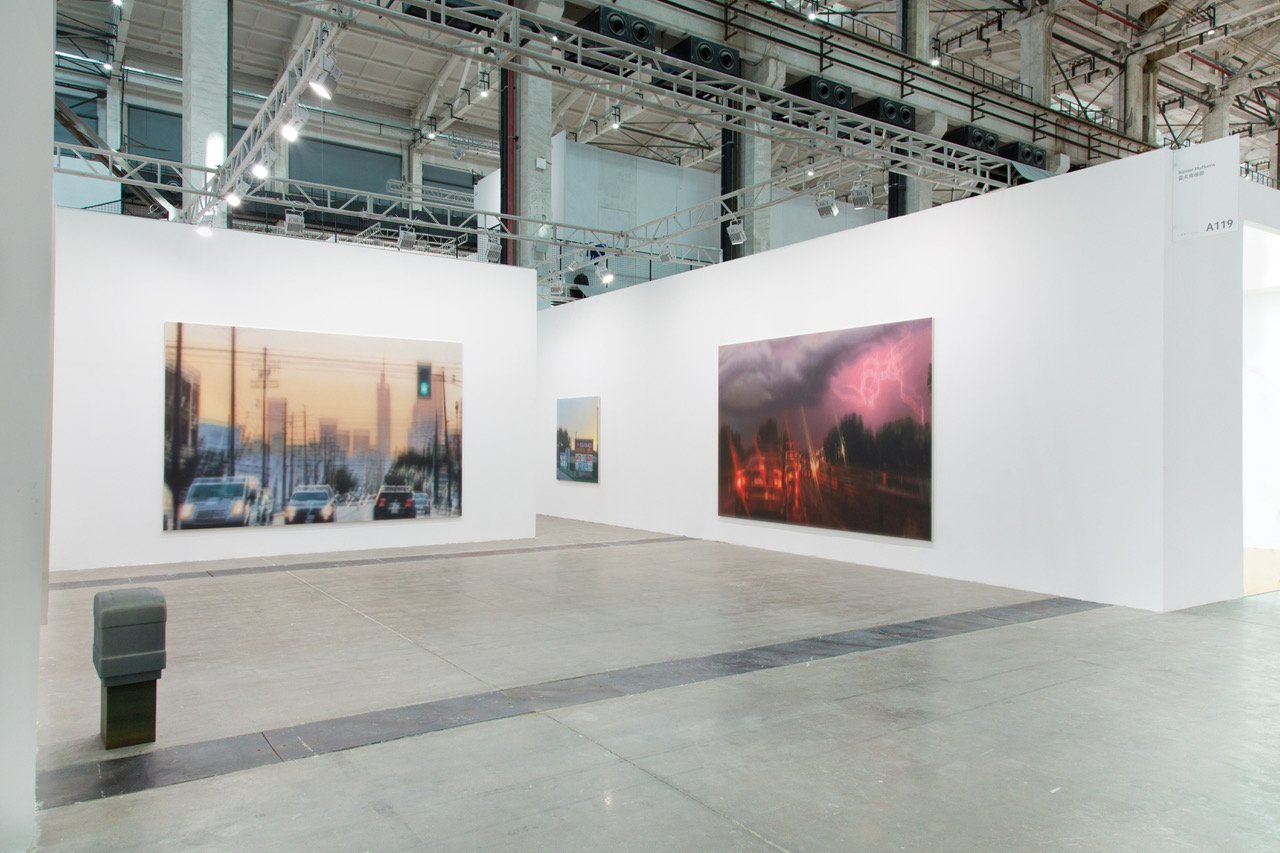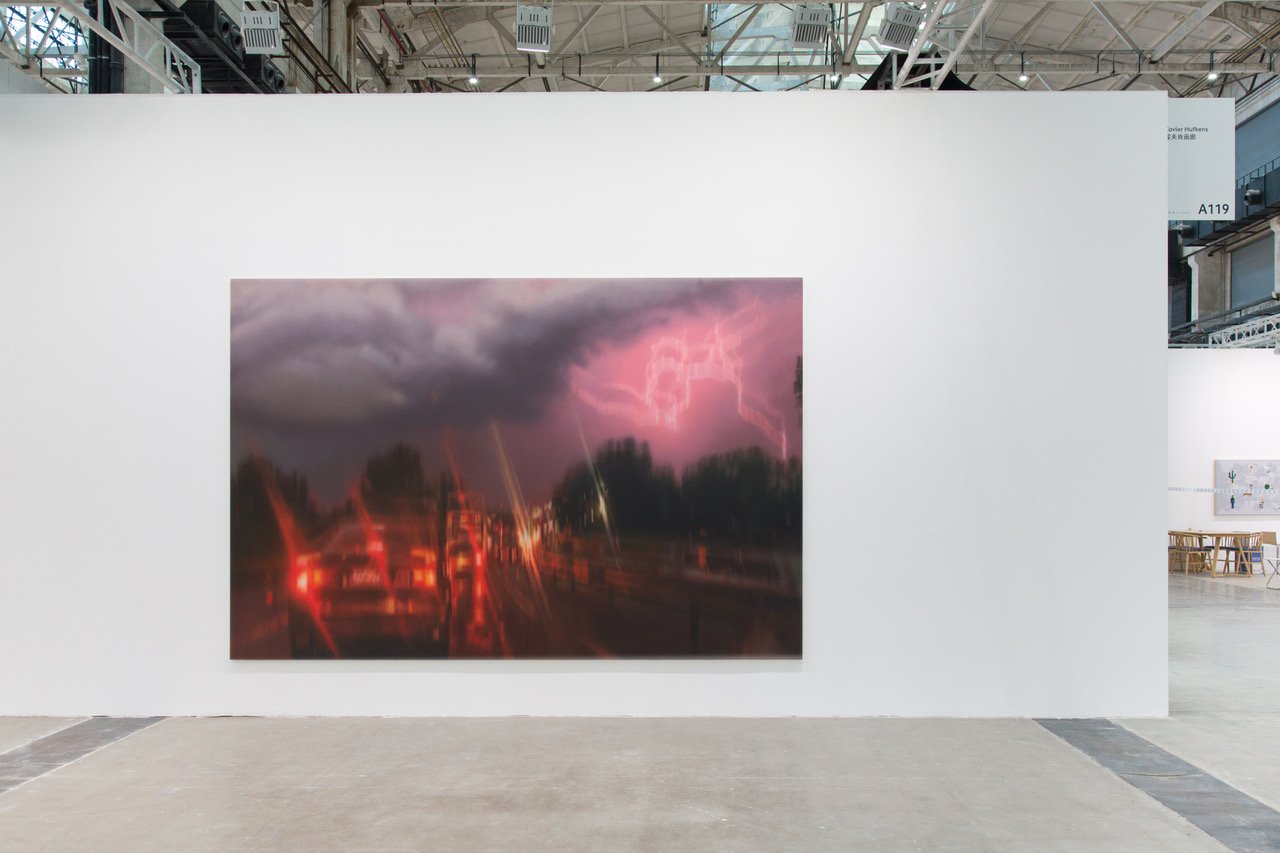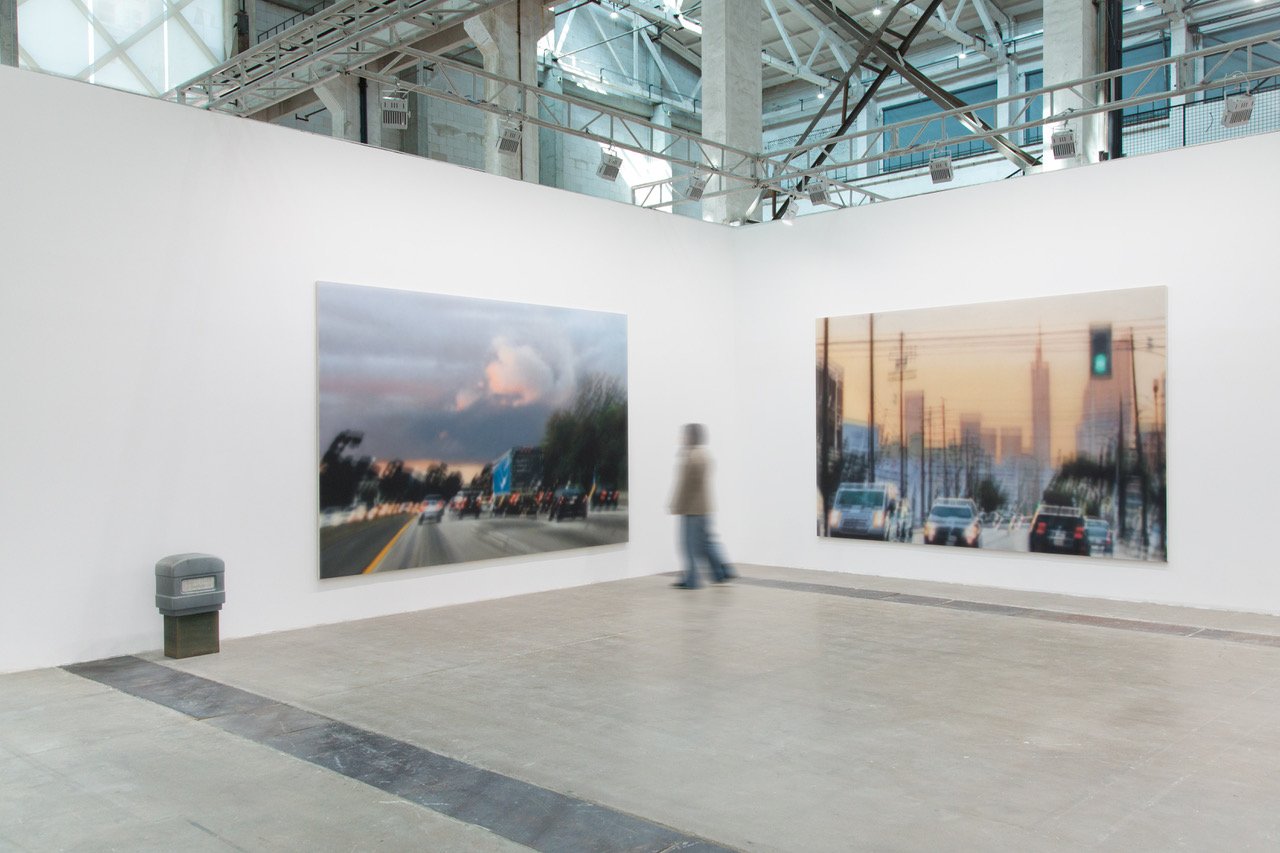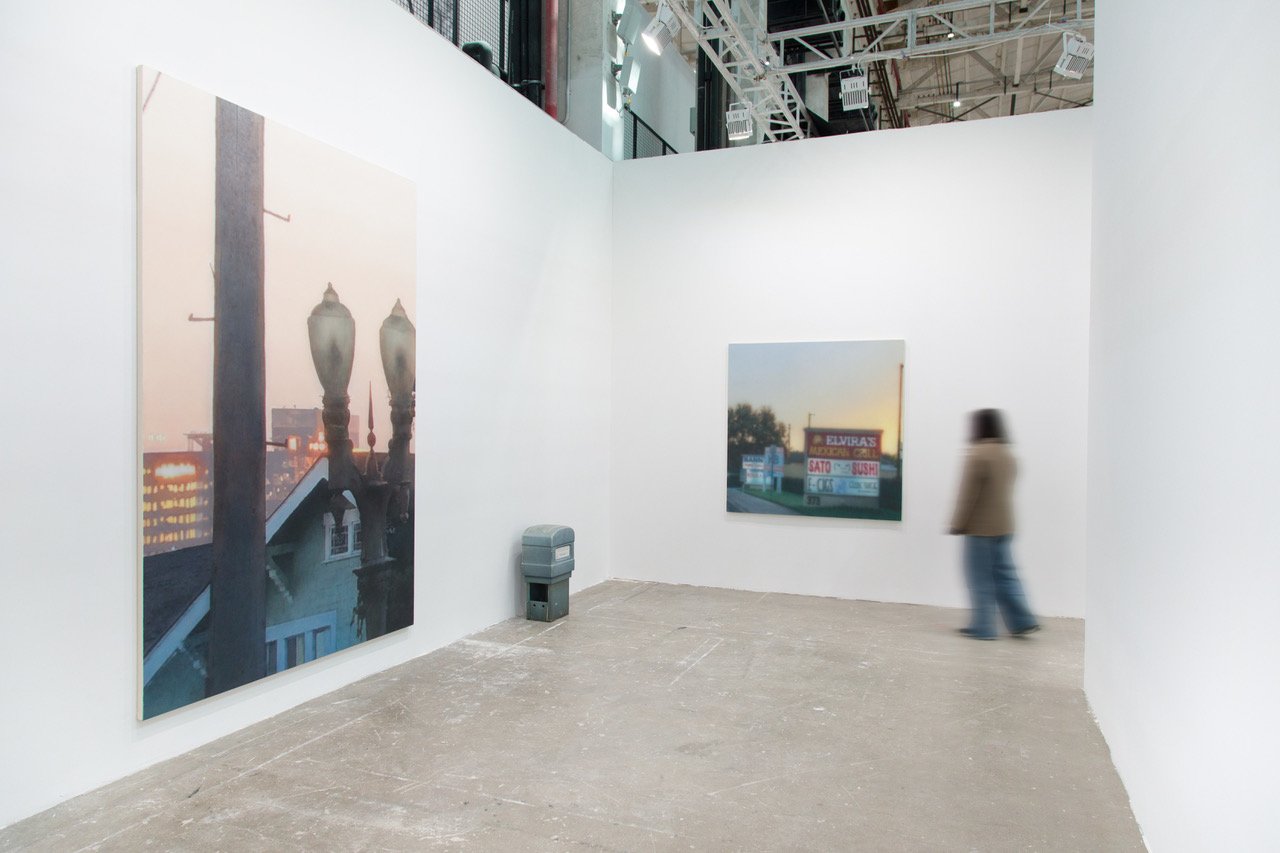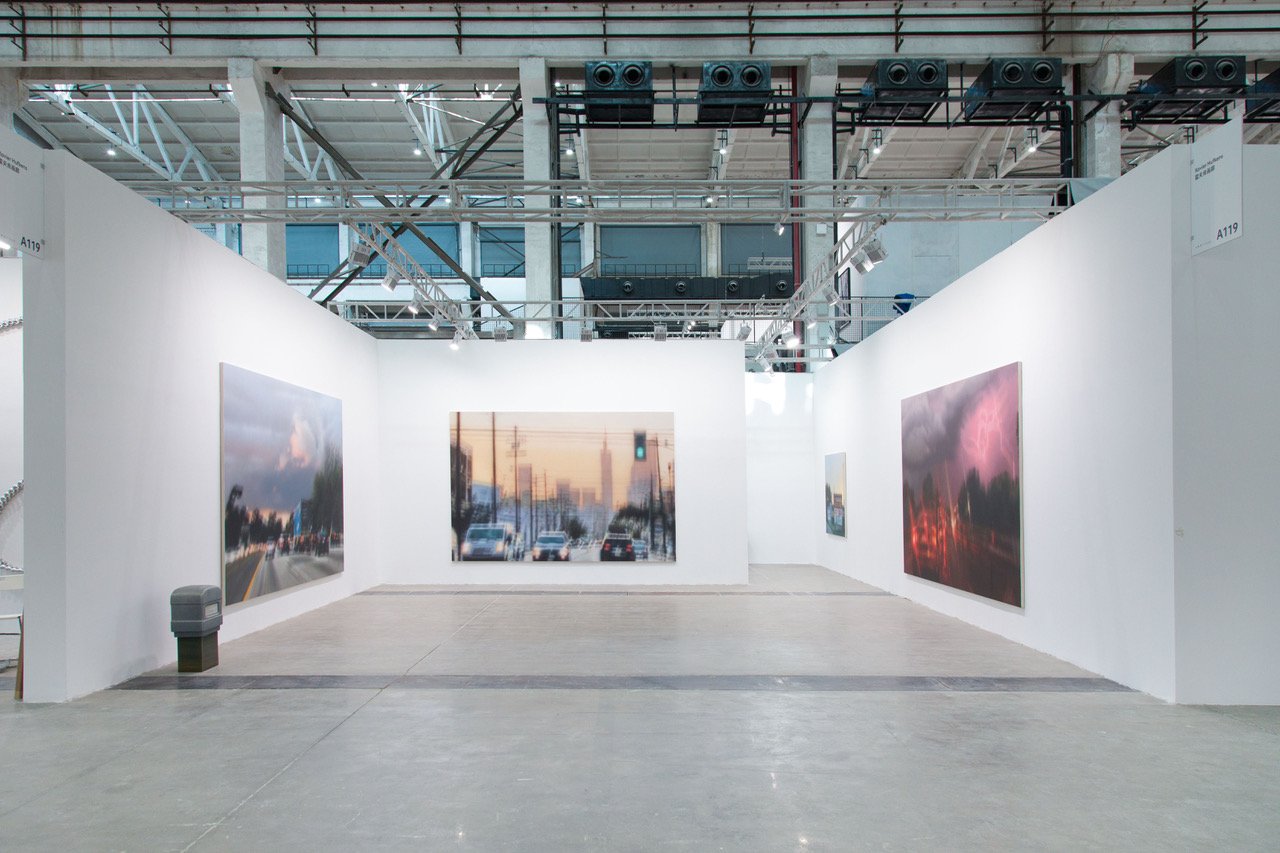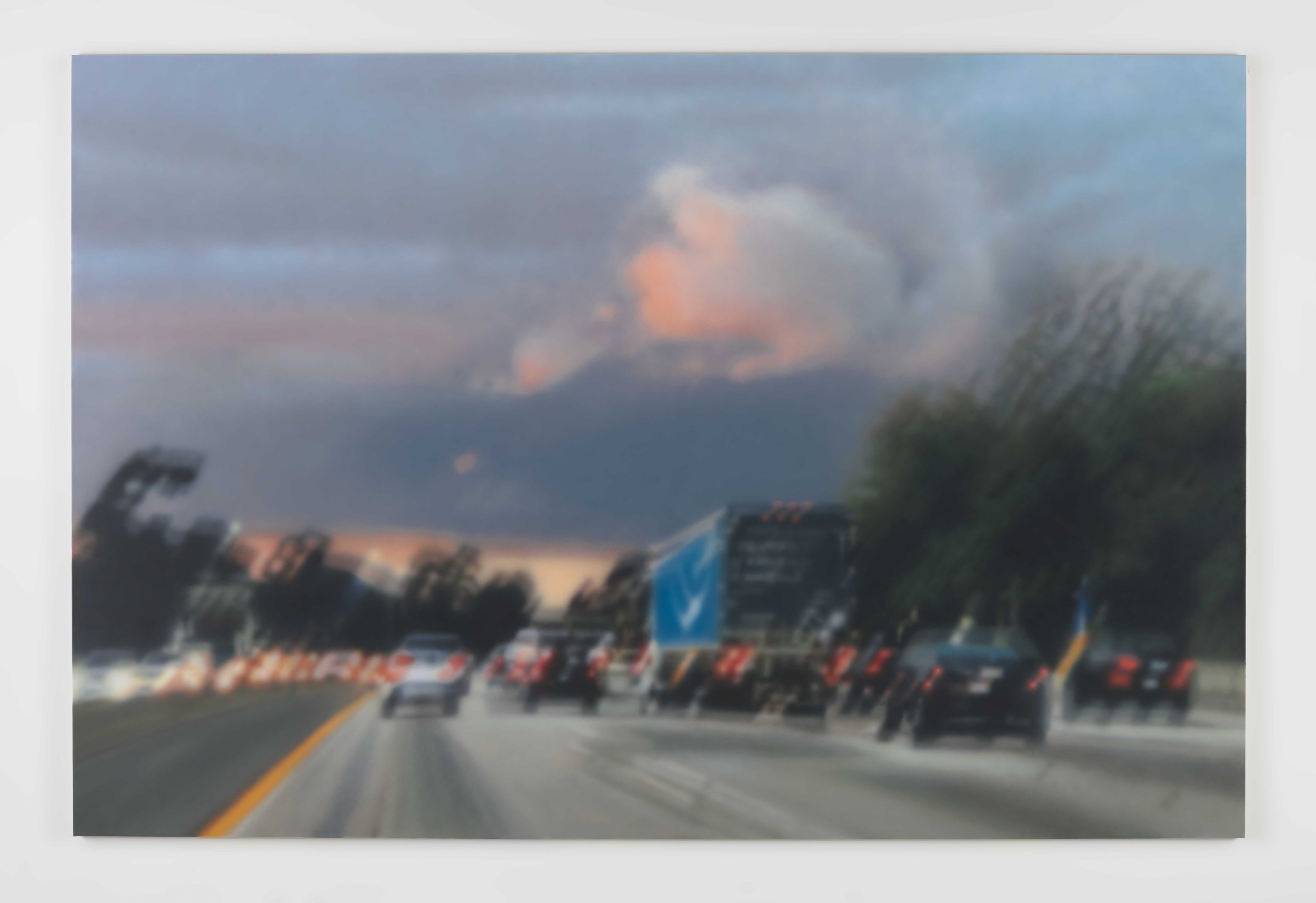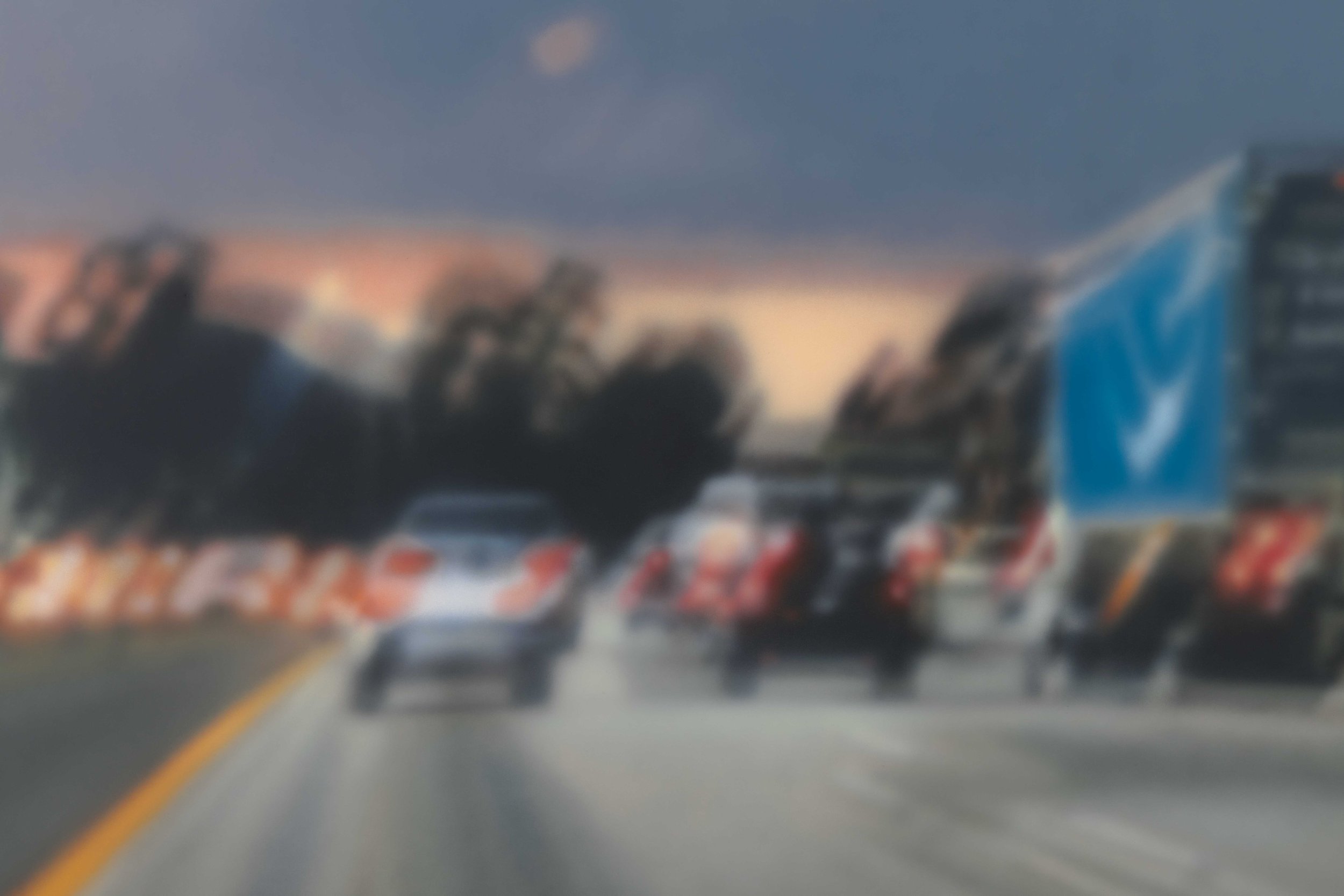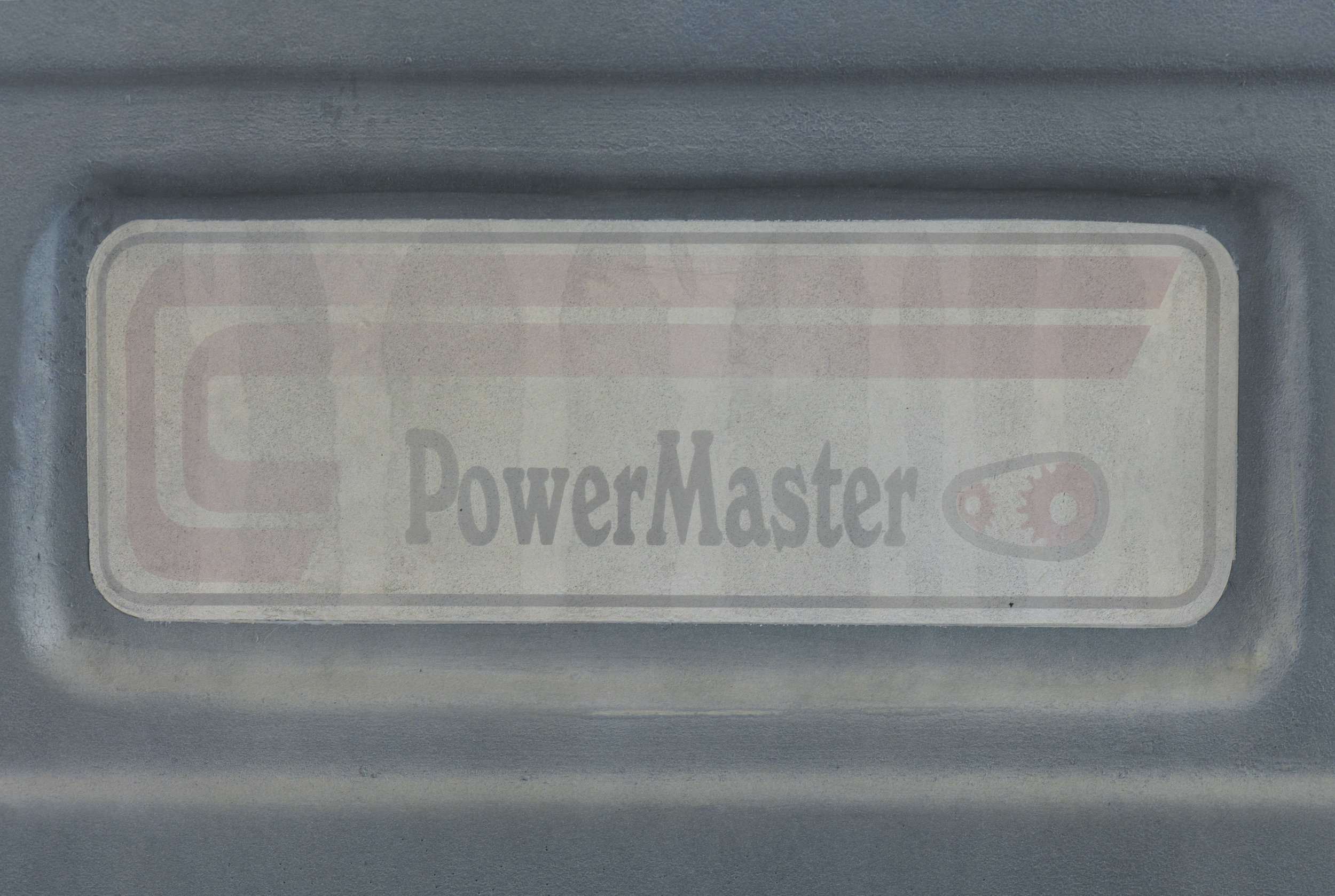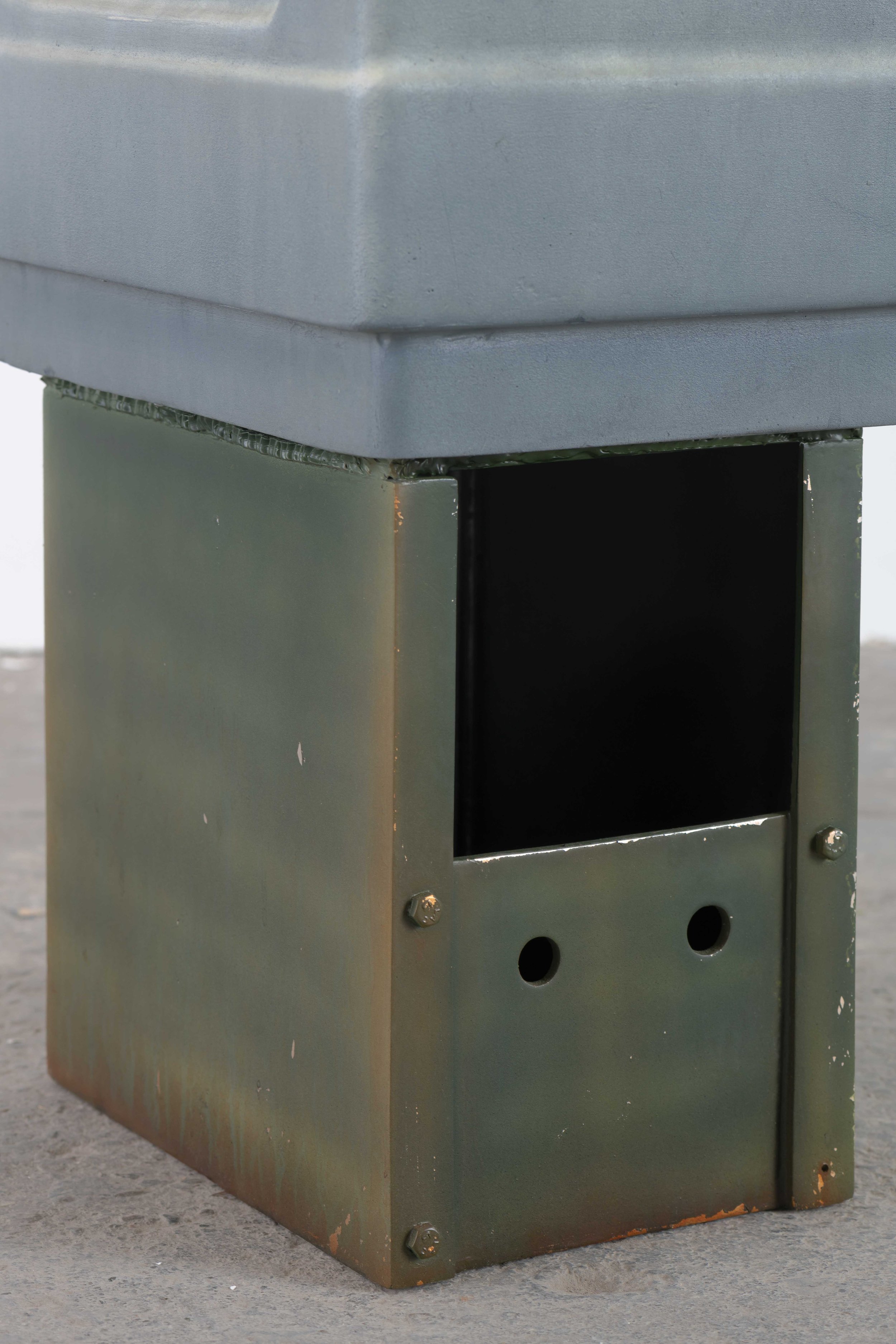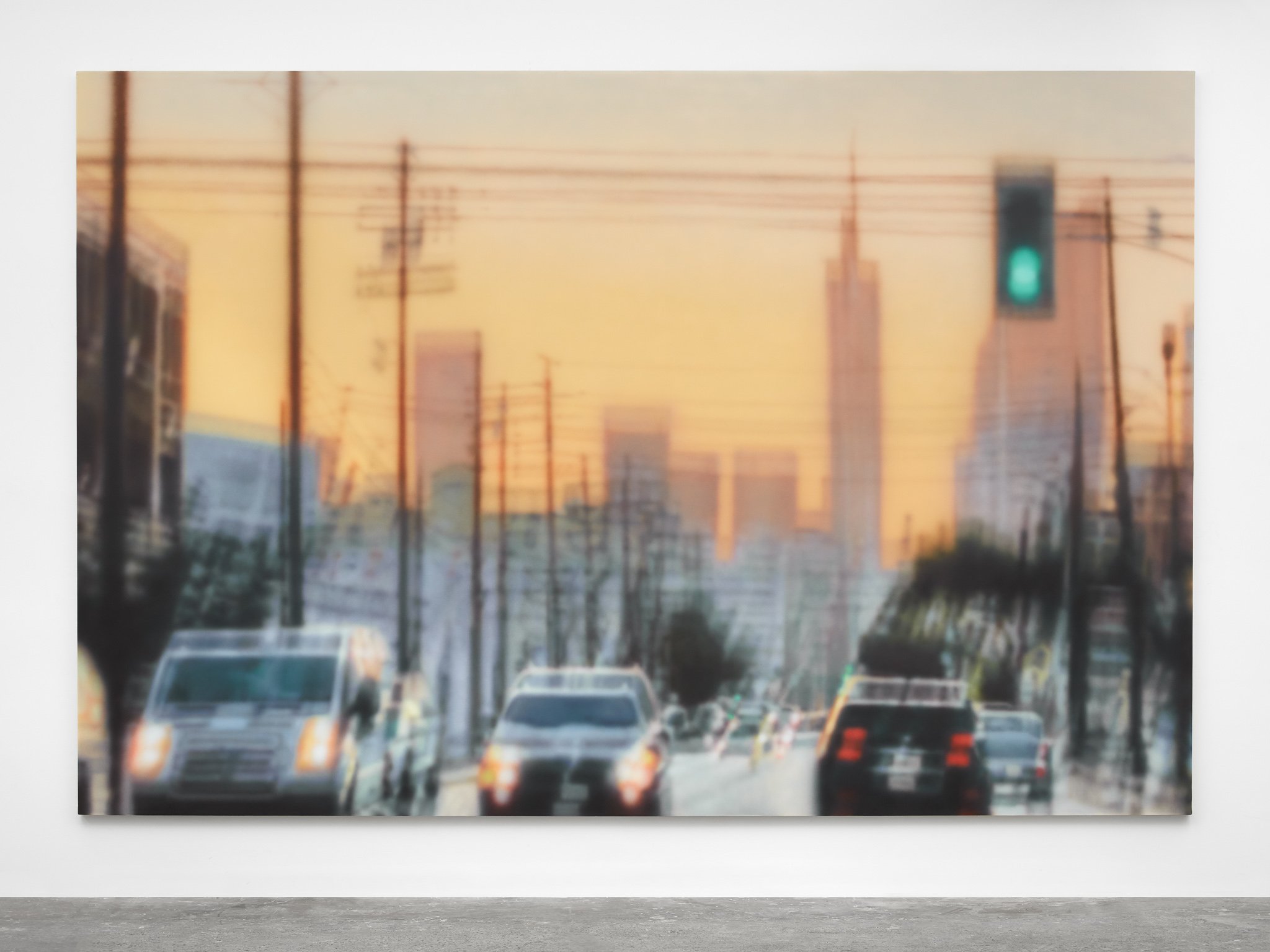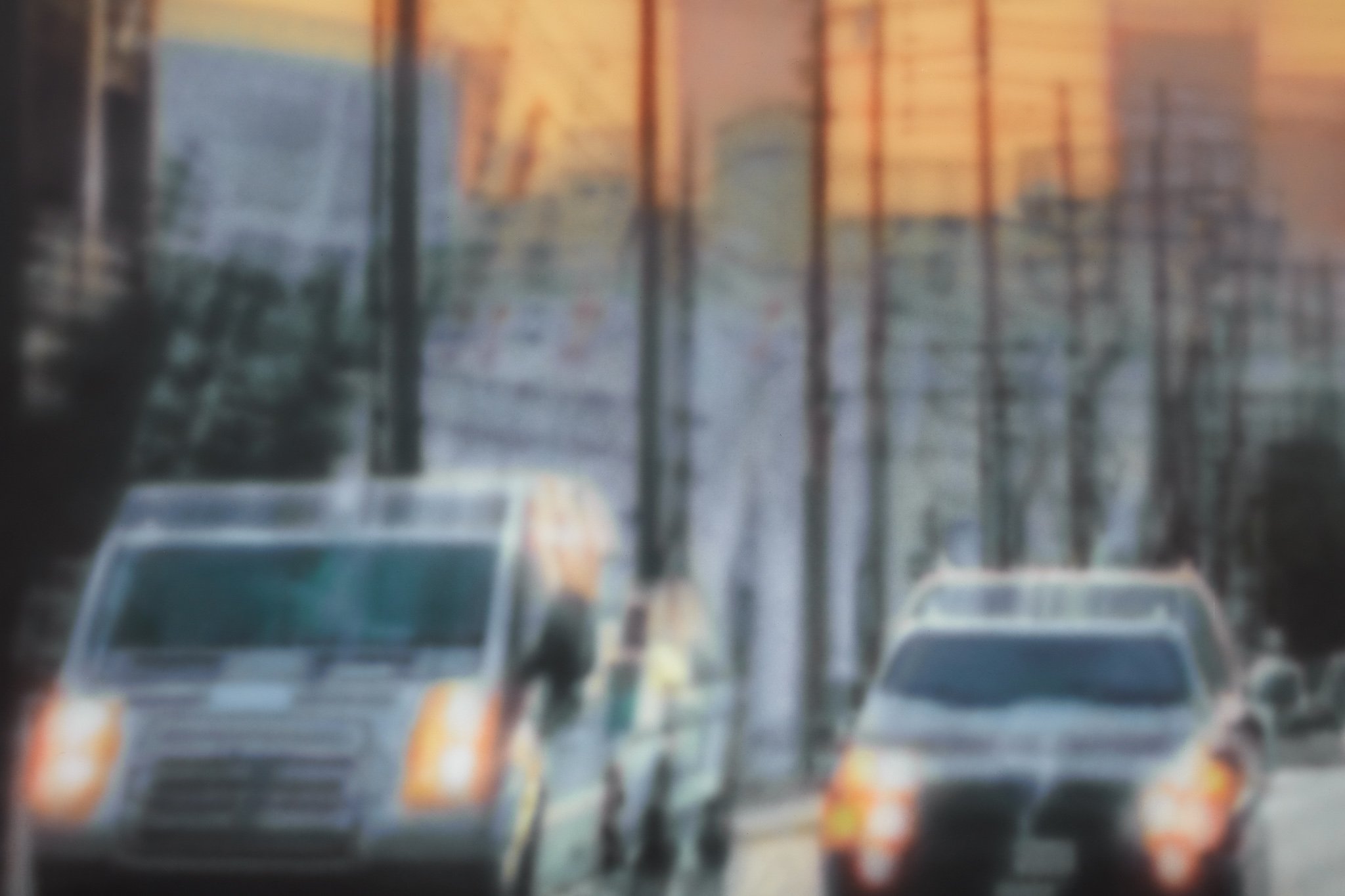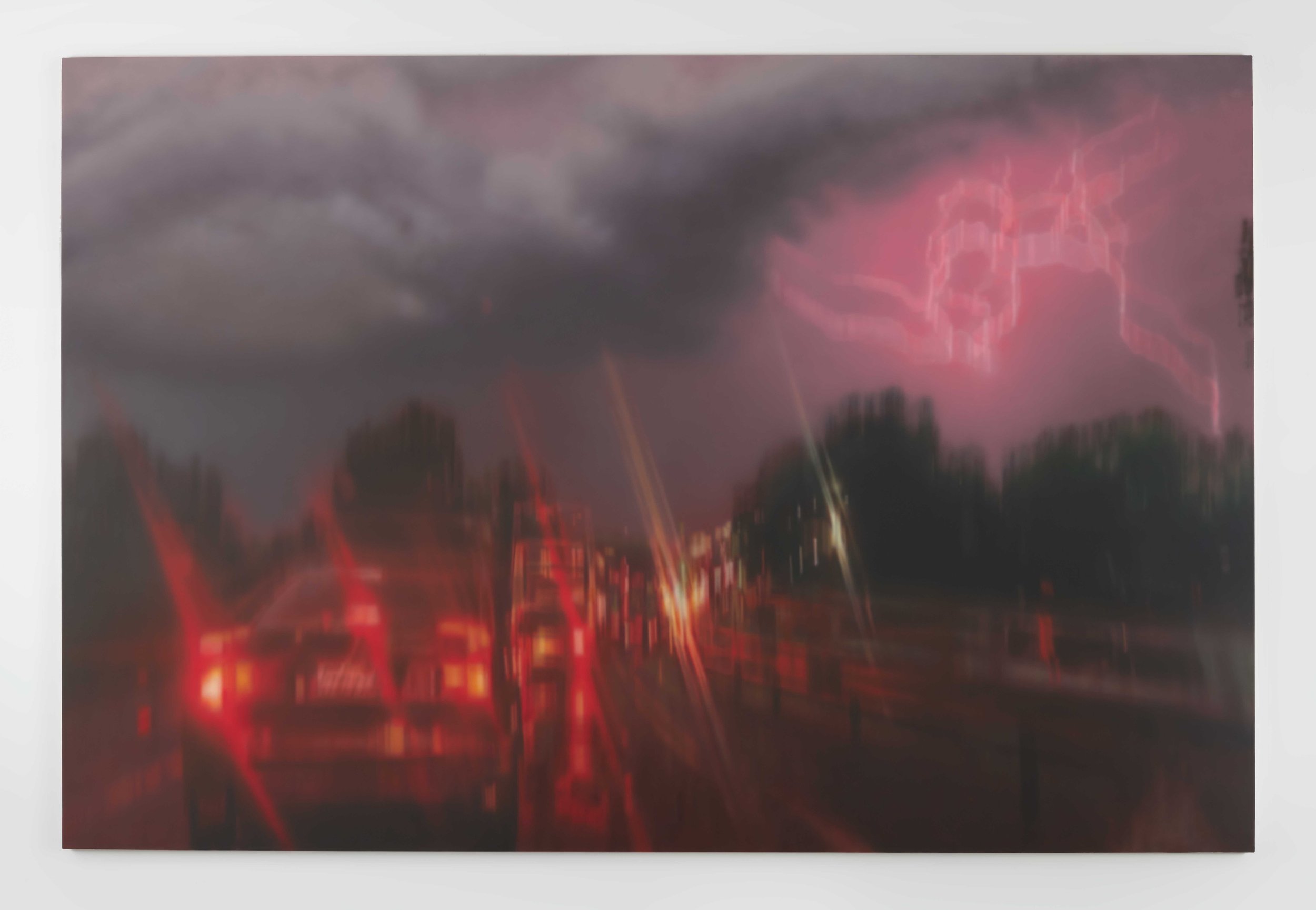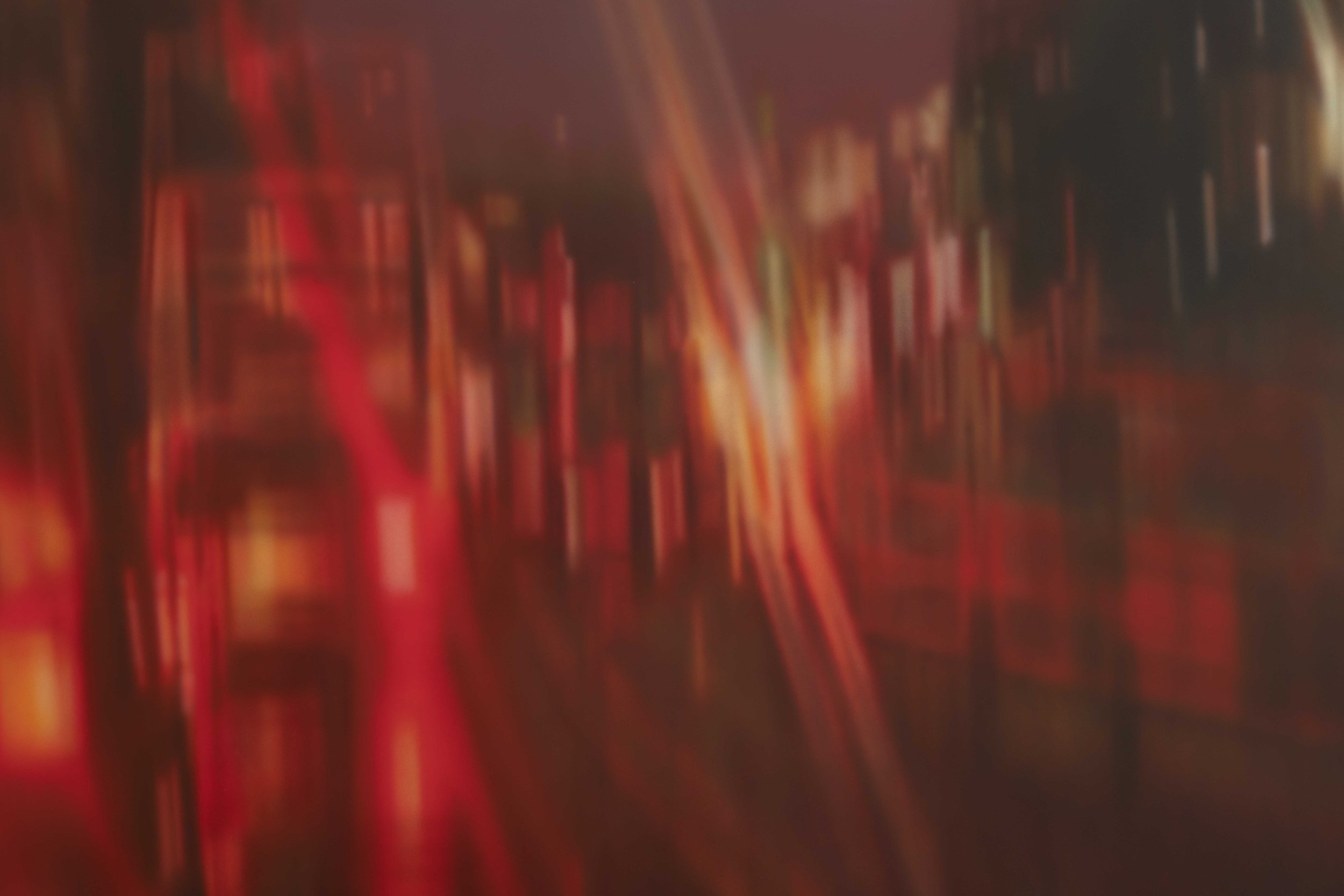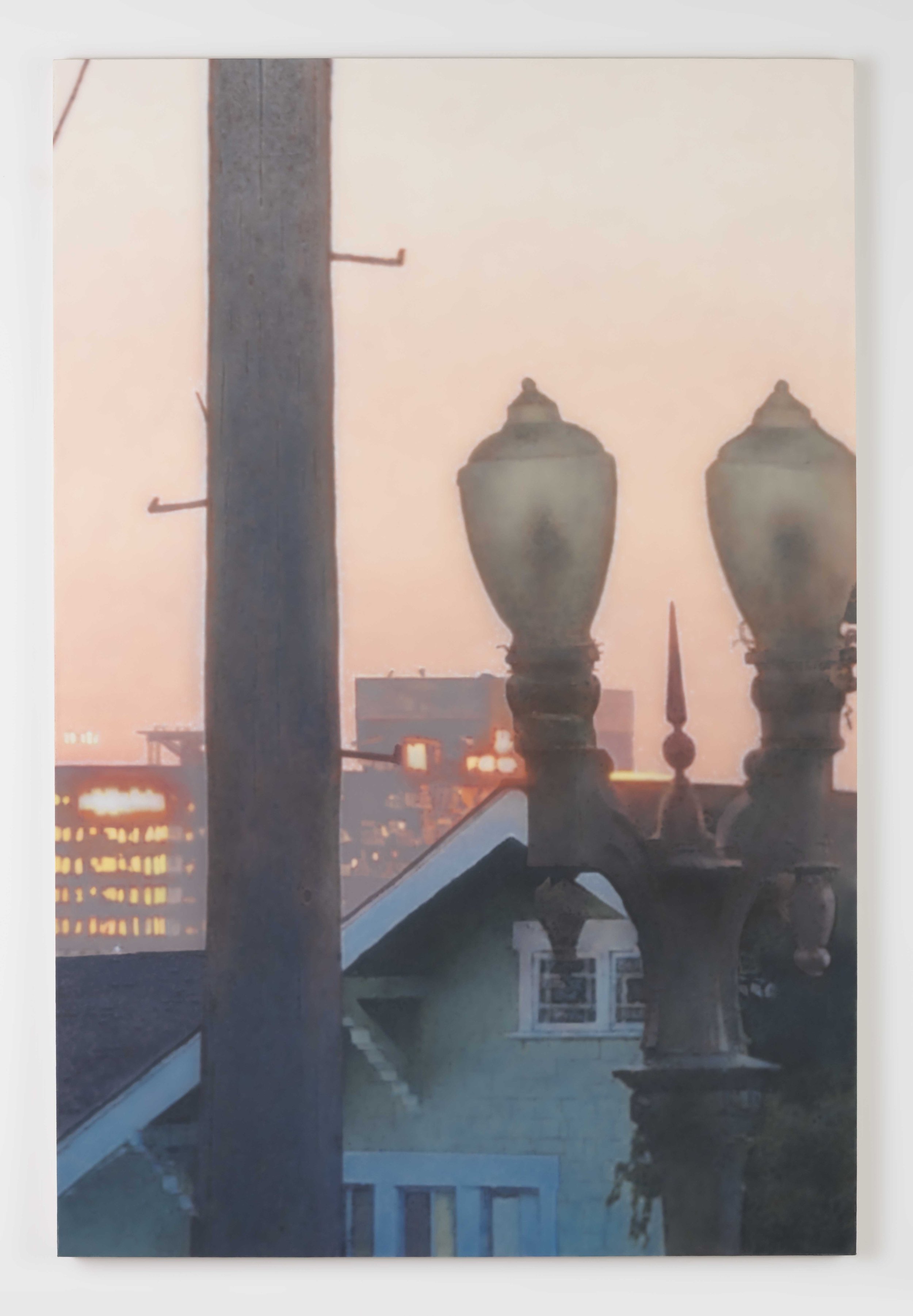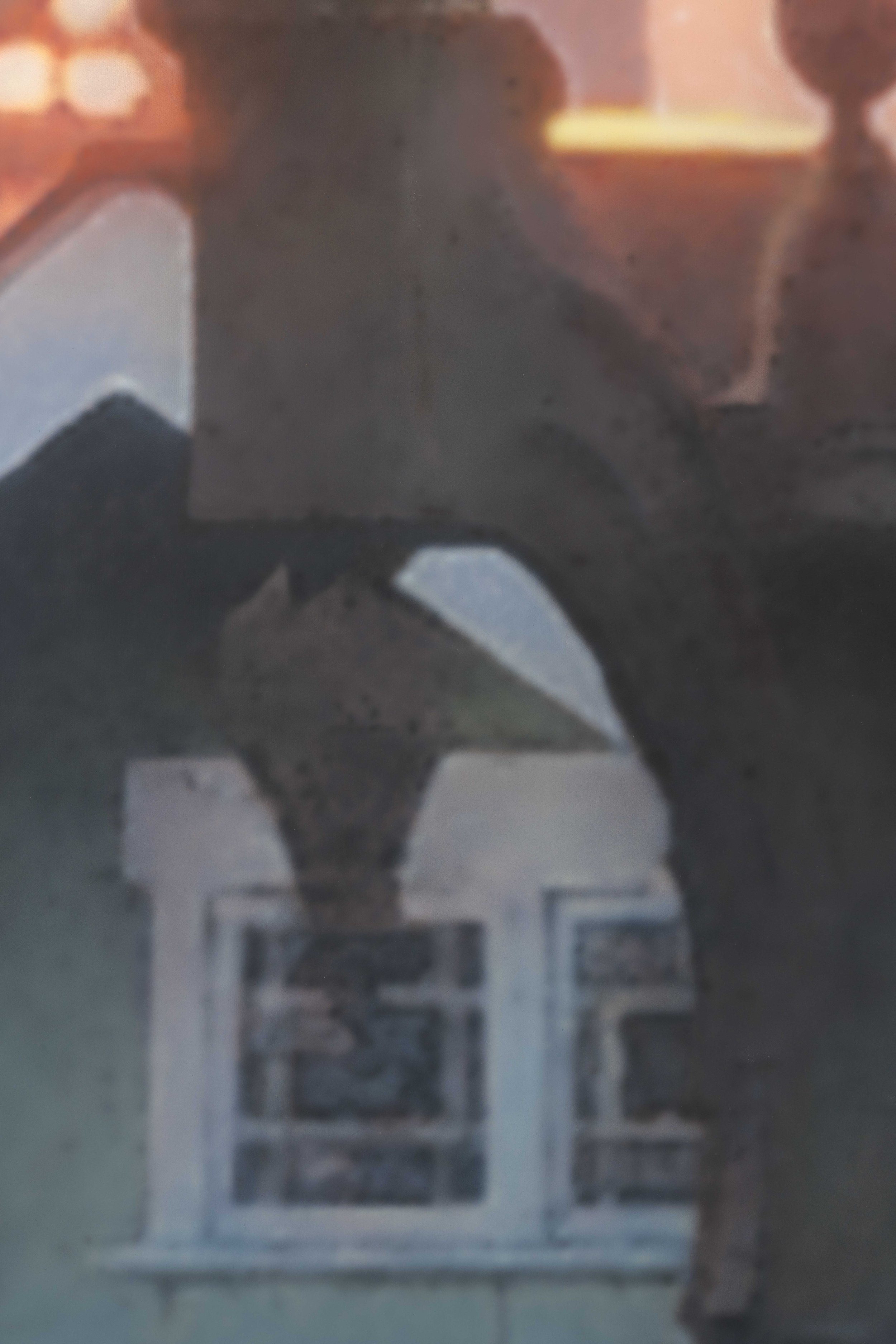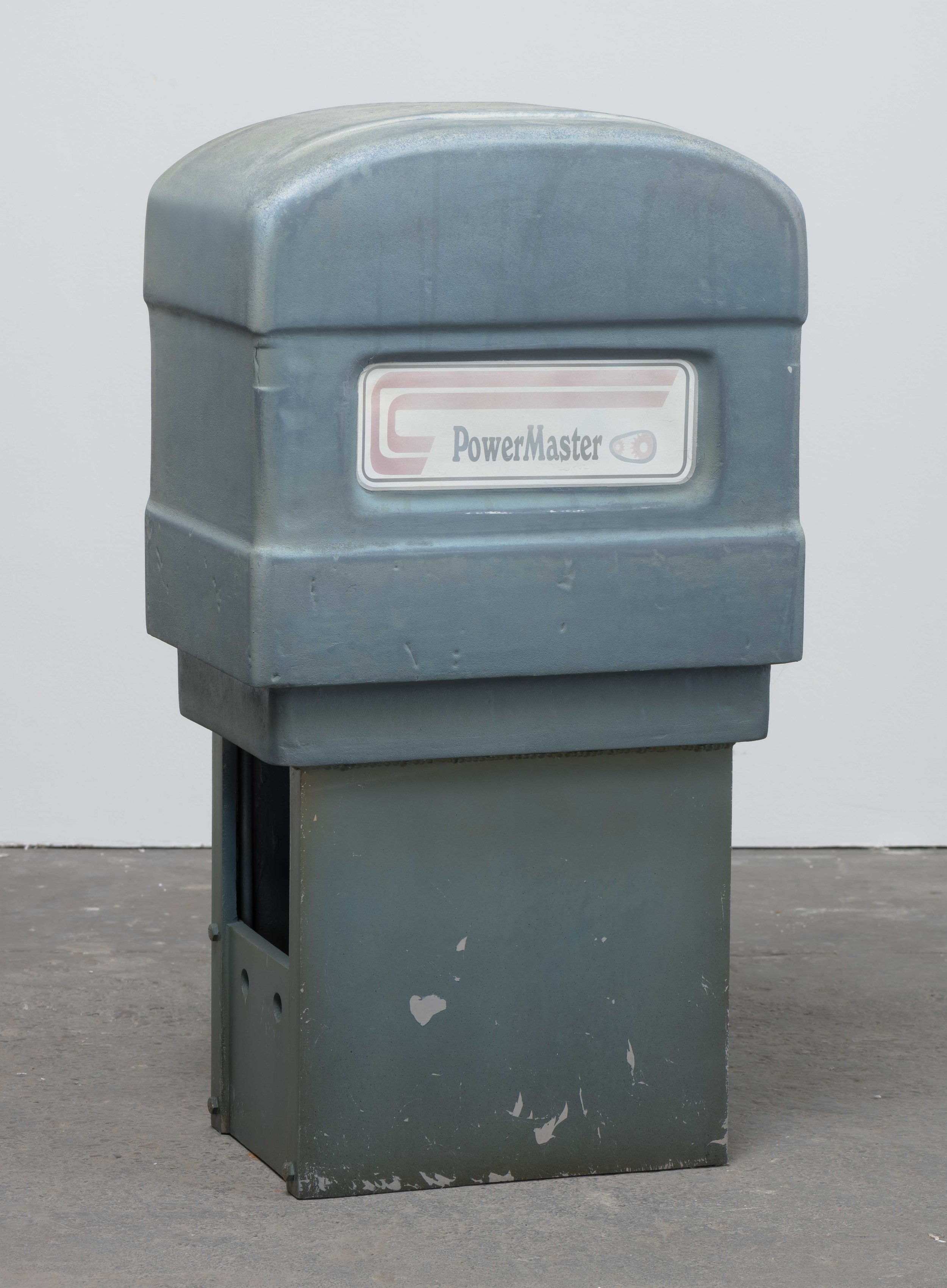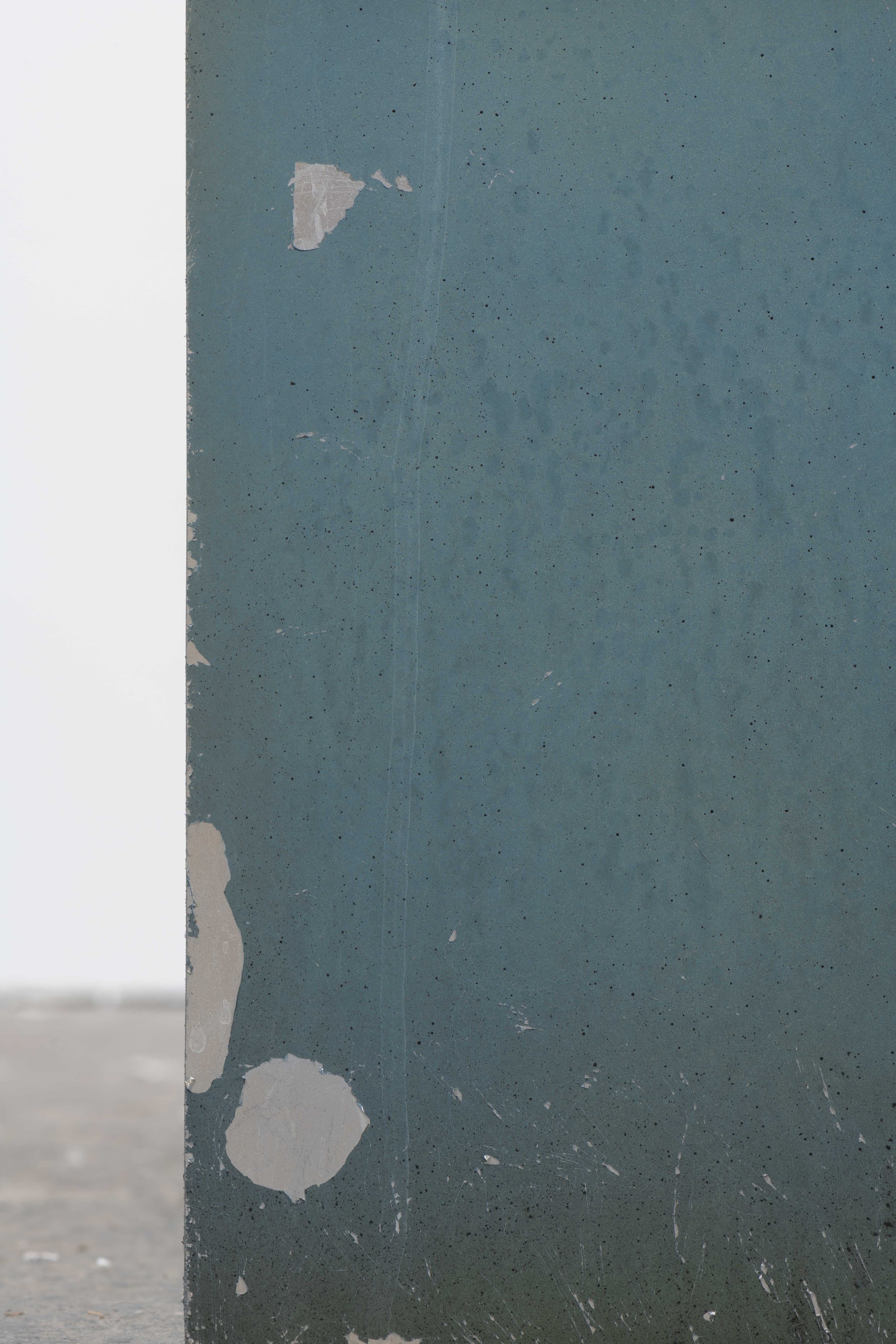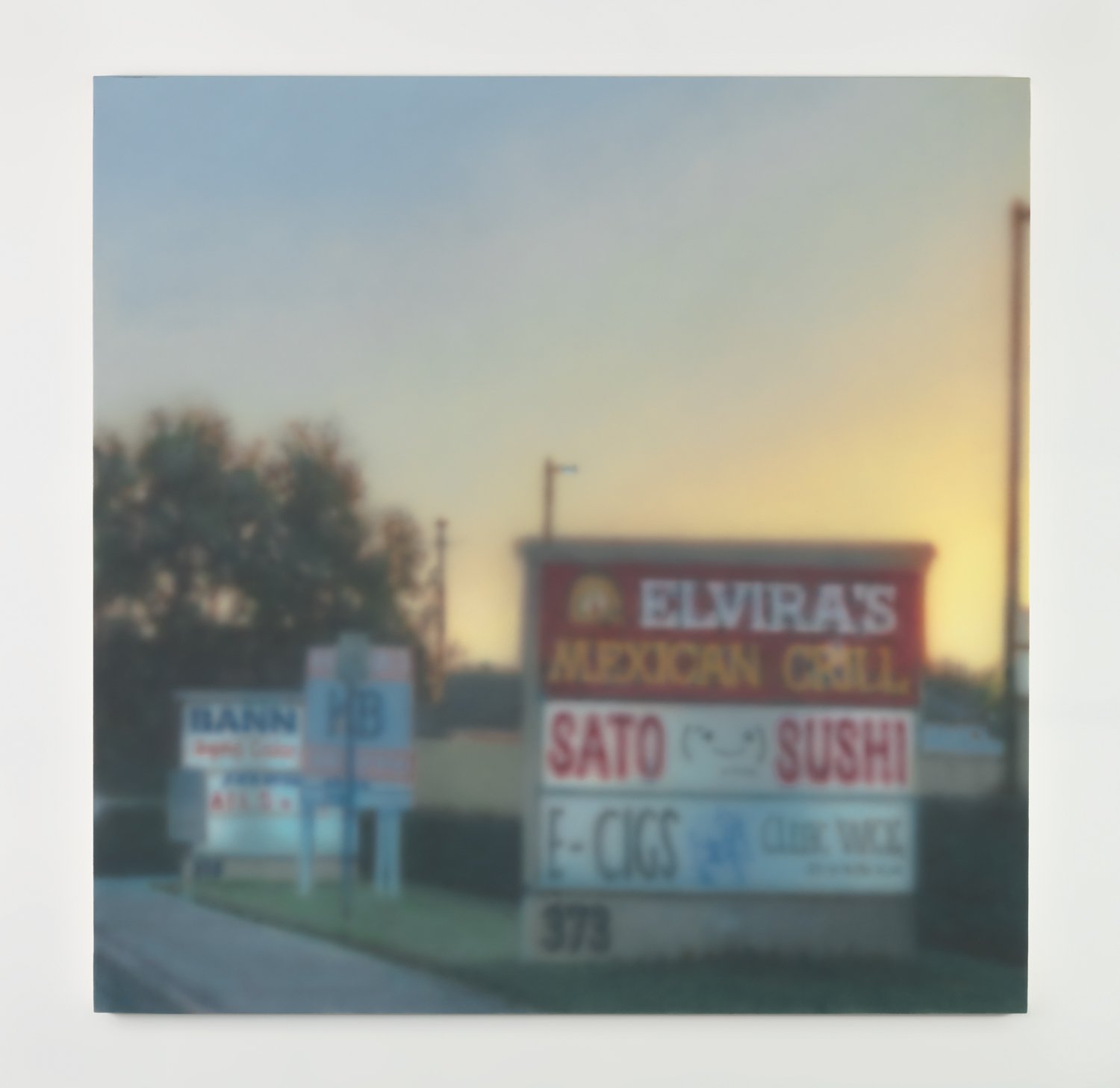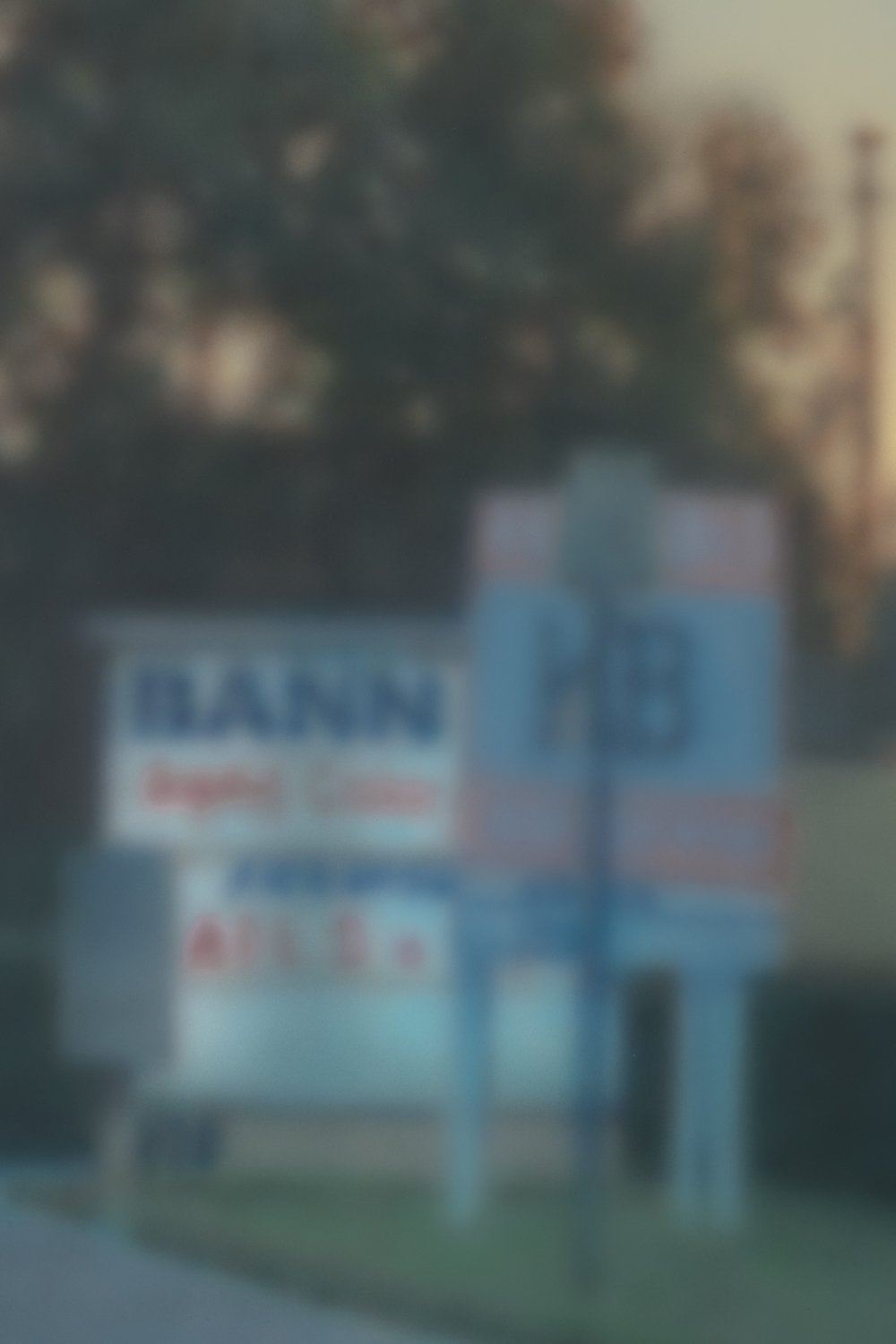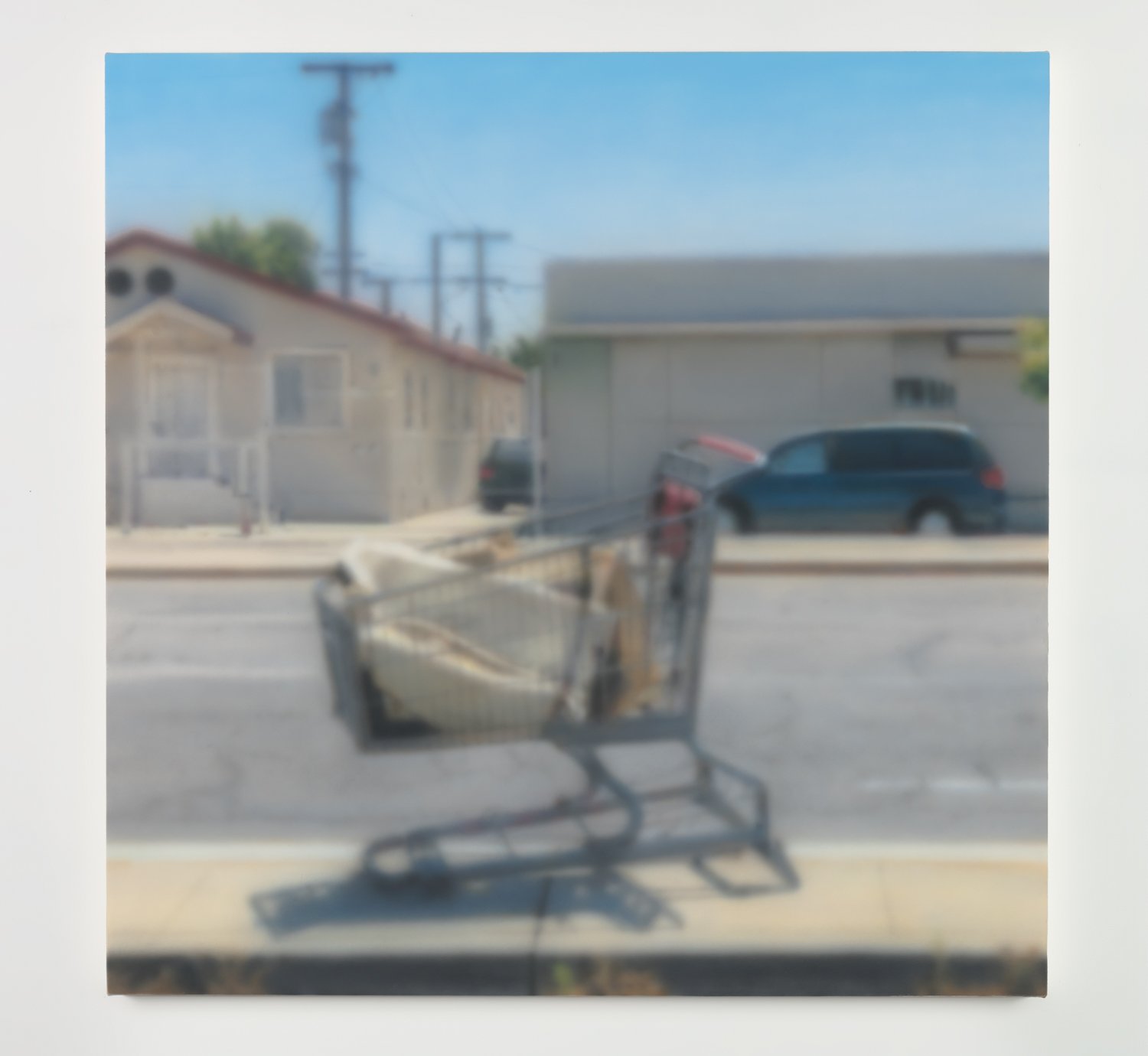West Bund, Xavier Hufkens, Shanghai, CN
November 11 - 14, 2021
Installation Views
Individual Work
Press Release
Xavier Hufkens is pleased to present new works by Sayre Gomez for the 2021 edition of West Bund Art & Design, the first solo presentation of the artist in Mainland China. The paintings and sculptures in this selection continue the artist’s interest in dissecting the visual language of the everyday in America, particularly the socio-economic realities fracturing Los Angeles, where the artist lives and works.
Gomez’s works on canvas reflect his commitment to a new form of realism mediated by technology—a realism that embraces artifice. The artist takes digital snapshots while driving across the city of Los Angeles. His frames are blurred, captured imperfectly on a cell phone from inside a moving vehicle. The blurred canvases of Gerhard Richter come to mind. Here, however, the blur is employed not to decrease, but rather, to increase the painting’s reality-effect. Gomez’s blur might be understood as his most realistic style, surpassing the illusionism of the artist’s characteristic trompe l’oeil.[1] In Traffic(ing) 1, 2021 an Amazon Prime truck moves with the dense traffic under a heavily clouded sky. The abstracted logo is at once the brightest element on the canvas, yet arguably, the most ominous. Works such as Traffic(ing) 2, 2021 are in dialogue with Los Angeles’ recent art history, notably the electric skies of Jack Goldstein, a prominent figure of the 1980s scene that formed around California Institute of the Arts. Goldstein was one of the first contemporary painters to outsource the execution of his paintings. While Gomez does create his own works at his studio, like Goldstein, he does not romanticise the artist’s gesture. He frequently employs techniques that fall outside the realm of fine art, borrowing from Hollywood set design and commercial signage.
The Collector (2021) belongs to a series of works that treat the subject of homelessness in Los Angeles, confronting systemic failures in a direct way. A shopping cart stands alone on a typical sun-drenched street. Away from the supermarket, the cart is reappropriated as standard equipment for homeless survival. The suburban homes and family vehicles in the background show that multiple realities co-exist within the contemporary American condition.
Two sculptures, Gatekeeper 1 and Gatekeeper 2, both from 2021, follow earlier works that reference the liminal spaces of parking lots with their pilons, chains and electrical gates. The machines that Gomez replicates here are so ubiquitous as to be unnoticeable. Entering Gomez’s visual world, the gatekeepers are stripped of their utility. They service the symbolic realm, encouraging us to reflect on politically charged barriers—social, cultural and economic—within our urban environments.

